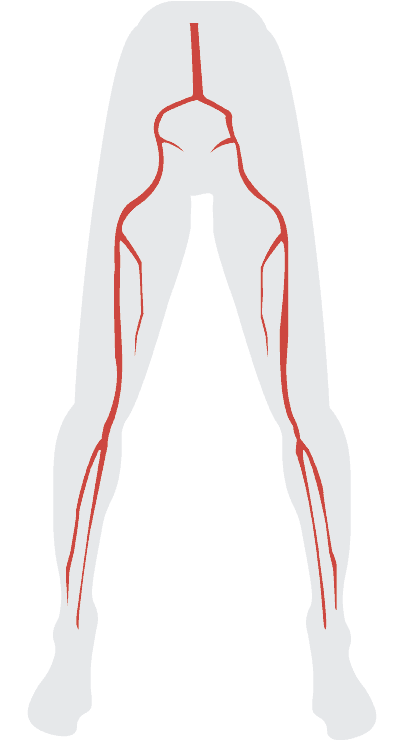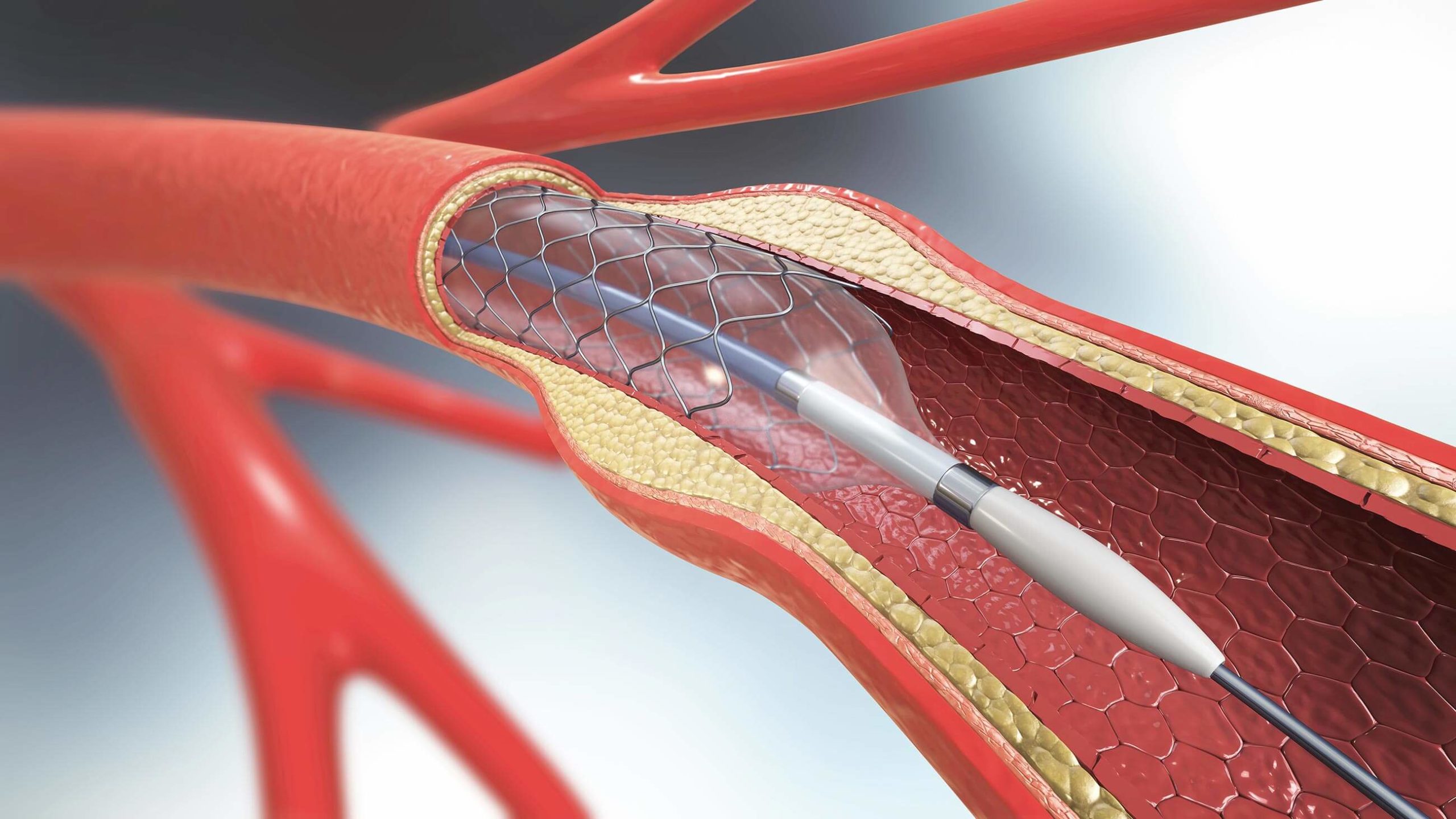About Peripheral Arterial Disease (PAD)
Table of Contents
What Is Peripheral Arterial Disease (PAD)?
Plaque is cholesterol, fat, or calcium deposits in the arterial wall that limit or prevent blow flow to your legs. In it’s early stages PAD can be asymptomatic, as it advances you will develop pain, aching, or tiredness with exertion relieved with rest in the effected extremity. In the advanced form of Peripheral Arterial Disease (PAD), this can occur at multiple levels and within multiple vessels in the same extremity, leading to rest pain (pain, cramping, or numbness in the foot when lying flat that is relieved when you put it down), ulceration (painful circular wounds in the foot or lower leg), or gangrene (dark to black discoloration in the toes or foot). This advanced form is called Critical Limb Ischemia (CLI).

Who Is At Risk for Peripheral Arterial Disease?
Adults over age 50 are at risk for PAD. It affects 8 to 12 million people in the United States, especially those over age 50. The risk for PAD increases if you smoke or used to smoke; have diabetes, high blood pressure, and high blood cholesterol; or have a history of vascular disease, heart attack, or stroke.
Those diagnosed with the following conditions are at greater risk:
- Diabetes
- Chronic Kidney Disease
- High Blood Pressure
- Coronary Heart Disease
- If you have a history or family history of heart disease, heart attack, or stroke.
What Are Symptoms of PAD?
- Leg pain or tiredness with exertion that is relieved with rest.
- Toes or feet that become discolored when upright.
- Leg or foot pain that disturbs your sleep.
- Sores or wounds on your toes, feet, or legs that heal slowly or not at all.
- Burning feet diagnosed as neuropathy that does not respond to medication.
Peripheral Arterial Disease Treatment Options
PAD can be treated using one or a combination of the following options.
- Lifestyle modifications
- Medication
- Minimally invasive surgical procedures
- Early detection and treatment is important to control the PAD disease and allow you a full selection of treatment options
Learn more about PAD treatment options here.
Lifestyle Changes
- Quit smoking. Don’t smoke, and if you do, quit. Lower your numbers.
- Work with your health care provider to correct any high blood pressure, cholesterol, and blood glucose levels.
- Follow a healthy eating plan. Choose foods that are low in saturated fat, trans fat, and cholesterol.
- Get moving. Make a commitment to be more physically active. Aim for 30 minutes of moderate-intensity activity on most, preferably all, days of the week.
- Aim for a healthy weight. If you are overweight or obese, work with your health care provider to develop a supervised weight loss plan.
Medication for Peripheral Arterial Disease
In addition to lifestyle modifications, your health care provider may prescribe one or more medications that help:
- Lower high blood pressure and cholesterol levels and treat diabetes
- Prevent the formation of blood clots that could cause a heart attack or stroke
- Help reduce leg pain while walking or climbing stairs
- Peripheral Arterial Disease Clinical Treatments
- For people suffering from Peripheral Arterial Disease (PAD), the buildup of plaque in the arteries of the legs often leads to severe and even debilitating leg pain. When the plaque becomes “calcified,” limited options have been available to successfully treat the problem – until now.
Minimally Invasive Surgical Treatment Options for PAD
Angiograms
Angiograms are minimally invasive diagnostic procedure used to confirm the presence of disease.
Angioplasty
An Angioplasty can be performed at the time of the angiogram and is the expansion of a balloon in the area of the blockage in order to re-establish blood flow.
Stent Placement

A stent is a small metal mesh tube that may accompany balloon angioplasty that helps the vessel remain open.
Atherectomy
There are many forms and devices, but all Atherectomy allows for the removal of plaque (cholesterol, fat, and calcium deposits) in order to return the elasticity of the blood vessel.
Catching Peripheral Arterial Disease early is important
PAD Patients are at more than 6 times the risk of death from coronary heart disease as those without PAD. If you're experiencing symptoms, see a doctor.
During your initial visit we will:
- Learn about your medical history and symptoms
- Perform a comprehensive vascular physical
- Perform an ultrasound to see vasculature (if necessary)
- Discuss treatment options and next steps
Important PAD & CLI Facts
Eight million Americans suffer from PAD.
160,000+ amputations occur every year in in U.S. as a result of untreated PAD.
54% of those amputation patients never even received a diagnostic angiogram.
Angiograms reduce the odds of amputation by 90%
